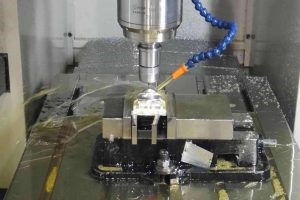CNC machining is the most widely used subtractive manufacturing technology. In CNC, various cutting tools are used to remove material from solid blocks, and parts are produced based on CAD models. Both metal and plastic can be processed by CNC.
How does CNC machining work? There are two main types of CNC machining systems: milling and turning. Due to its unique characteristics, each type is more suitable for manufacturing different geometric shapes. This is the schematic diagram of milling.
A typical milled part is manufactured by removing material from a rectangular blank.
Turning is the installation of parts on a rotating chuck and the use of fixed cutting tools to remove material. In this way, a symmetrical part along its central axis can be manufactured. The production of turned parts is usually faster (and lower cost) than milled parts.
A typical CNC turned part is made by removing material from a cylindrical blank. Turning systems (also called lathes) are used to manufacture parts with cylindrical contours. Non-cylindrical parts can be manufactured using a modern multi-axis CNC turning center, which is also equipped with CNC milling tools.
Not all complex parts can be processed by CNC. Although CNC machining provides great design freedom, not every geometry can be CNC machined. Unlike 3D printing, the complexity of parts increases costs because more manufacturing steps are required. The traditional 3-axis system will not work because of the limit, but the 5-axis CNC system allows the cutting tool to enter the area that the 3-axis system cannot reach.
Post time: Nov-24-2021


